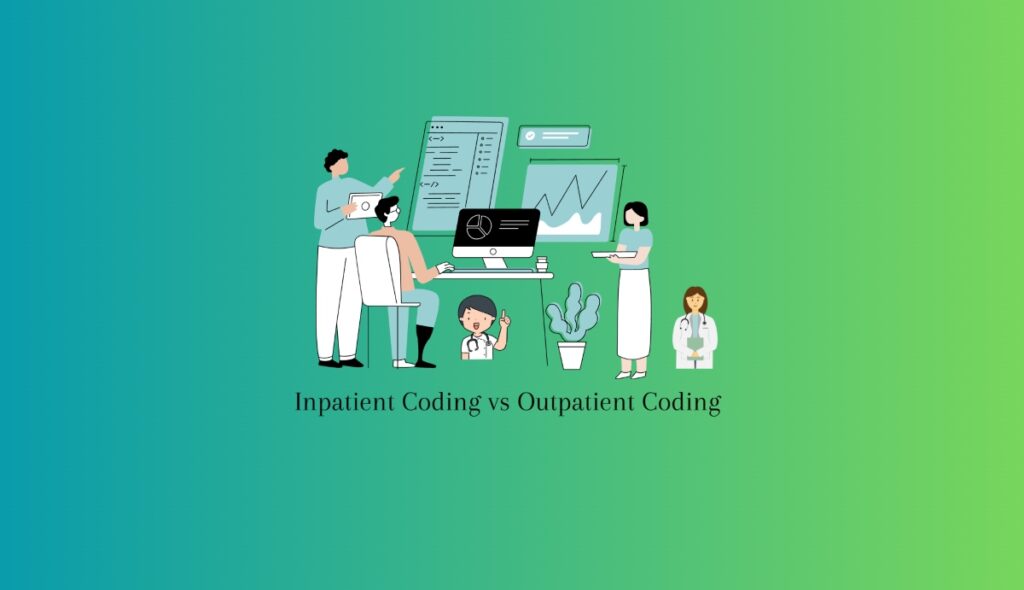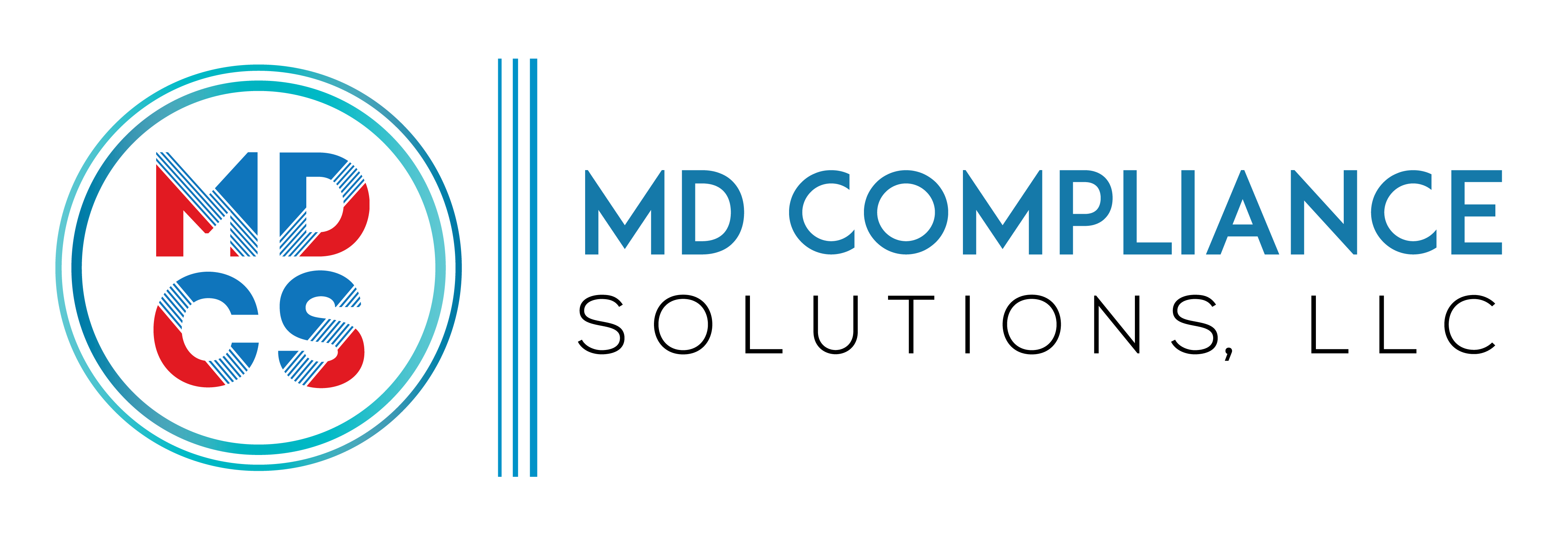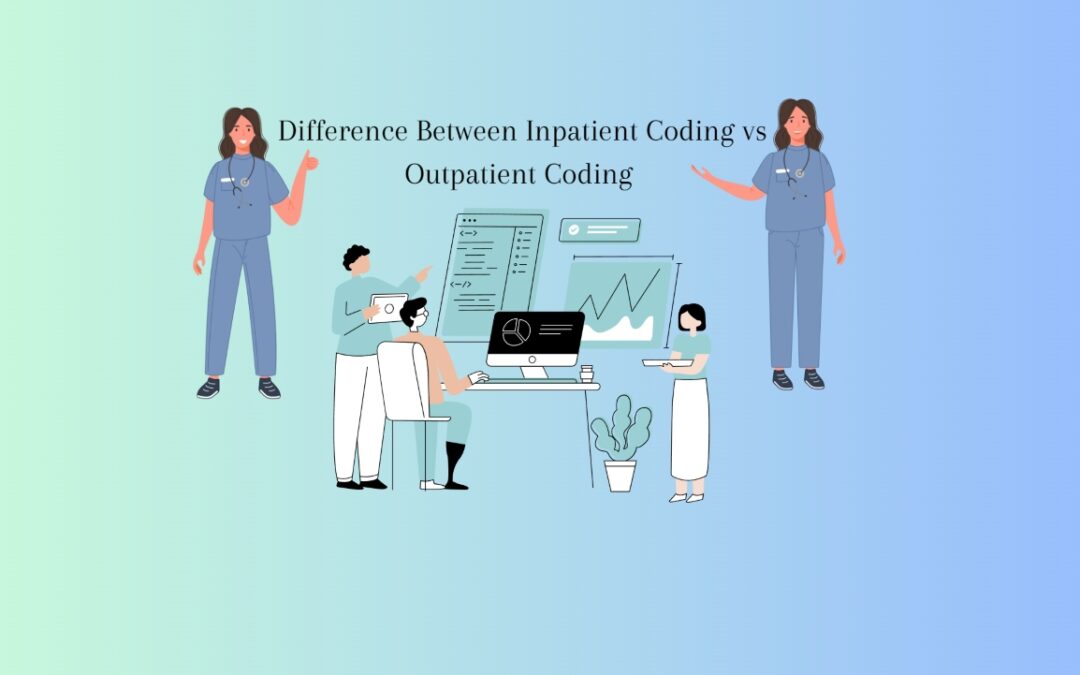Table of Contents
Know the difference between inpatient coding vs outpatient coding
The notch of coding complexity and the scope of care provided are the primary areas of difference between inpatient coding vs outpatient coding. The present-on-admission (POA) indicator, which documents the patient’s conditions at the moment of admission for the duration of the patient’s hospital stay, is included in the inpatient coding together with all services and procedures. Accurate coding is required for better treatments that last longer. However, outpatient classification applies to shorter visits that are shorter than a day. It concentrates on specific services or therapies given in one-on-one consultations. The inpatient code is more detailed than the outpatient code, which focuses on urgent, rapid therapy.
Here are the main differences:
Duration
The scope and complexity of coding for inpatients and outpatients vary significantly. All services rendered to patients throughout their hospital stay, which sometimes lasts several days or weeks, are included in the inpatient coding system. In order to do this, coders must thoroughly go over medical records, find pertinent codes, and guarantee accuracy. It requires comprehensive reporting, including the present-on-admission (POA) signal, which indicates whether a patient’s condition was present at the time of admission or developed while they were in the hospital. Ensuring this distinction is crucial for overseeing and managing patient care. Furthermore, the duration of hospital stay has a big influence on coding time because longer stays typically result in more thorough documentation
On the other hand, outpatient coding, which is much simpler, applies to patients who receive the treatment within 24 hours, but do not stay in the hospital. In outpatient locations, codes are assigned based on specific visits or contacts, highlighting the services that were rendered during that brief interaction. Even outpatient encounters might be complicated at times, necessitating extra time for coding.
Compensation
The codes linked to healthcare services determine how much is reimbursed for those services. Patients are grouped into DRGs based on their diagnosis, course of therapy, and length of hospital stay. When assigning a DRG, various criteria are taken into account, including surgical procedures, comorbidities and problems, secondary diagnoses, and the primary diagnosis. In addition to the patient’s status of discharge, the patient’s age and gender also matter. The presence of complications and comorbidities (CC) increases the severity and cost of care sessions. There is a clear link between the codes used for inpatient and outpatient care and the amount of reimbursement that is paid. Making sure that healthcare practitioners are paid fairly for the services they offer depends on accurate coding.
Inpatient Coding vs Outpatient Coding Billing
Different sets of codes and billing procedures are used for inpatient and outpatient coding, which can have a big influence on income. ICD-10-CM is mostly used for diagnosis in inpatient coding, while CPT is used for operations. This data is utilized to calculate reimbursement based on the degree of illness, complexity of operations, and duration of stay. In order to bill inpatient treatments, hospitals use the UB-04 form, which is designed for institutional claims and is used to explain the numerous services provided during a patient’s stay. This form makes it feasible to bill for all aspects of extended care, including treatments, procedures, and lodging expenses.
ICD-10-CM is also used in outpatient coding for diagnoses, and CPT is used for procedures. However, the CMS-1500 form is usually used to charge for outpatient services when physicians and other healthcare professionals provide professional services to patients who do not require an overnight stay. The primary purpose of this form is to bill for individual interactions, which include office visits, diagnostic tests, and minor treatments. It is noteworthy that several factors, including the patient’s insurance coverage, government regulations, and the provider’s contract with payers, might influence billing procedures.
Primary Diagnosis
Inpatient coding relies heavily on the major diagnosis since it determines the patient’s resource requirements and ensures payment processing in full. A diagnosis identifies the underlying illness that necessitates a hospital stay and is a crucial step in the treatment and payment management process.
In outpatient coding, the word “primary diagnosis” is rarely used. This is due to the fact that early meetings for outpatient sessions often focus on initial assessments and treatments, and it is conceivable that a definitive diagnosis will not be reached at that time. Outpatient coding, on the other hand, typically focuses on observations, symptoms, and the first diagnosis for short-term care.
Uncertain Diagnosis Coding
Healthcare practitioners must apply precise coding strategies to appropriately depict the patient’s state when a diagnosis is unknown at the time of discharge. There should be no outpatient coding for an unclear diagnosis. It is not a good idea for coders to insert code just because it seems right.
Complication:
If a procedure-related complication is the cause of a patient’s extended hospital stay, this should be documented as the primary diagnosis in the inpatient record. If some diagnoses are not supported by the complications, an alternative code could be assigned. In outpatient coding, surgical complications should be listed as the primary diagnosis for a patient who is admitted to the hospital after surgery. In inpatient coding, “working diagnosis” or “differential diagnostic” code may be used if more than one diagnosis is being considered and none of them can be clearly established. This suggests that a number of options are being investigated. However, in outpatient coding, when handling unclear diagnoses, typically takes a similar approach to inpatient coding. To express a suspected diagnosis, coders may use phrases like “rule out” or ” probable.”
What Are the Commonalities Between Inpatient Coding vs Outpatient Coding?
The two aspects share many similarities. Both use Current Procedural Terminology (CPT) to record procedures and services and the International Classification of Diseases, Tenth Revision, Clinical Modification (ICD-10-CM) for diagnosing patient conditions. But in order to comply with inpatient and outpatient regulations, coders must stay up to date on any modifications to hospital coding policies. Patients can submit claims to insurance companies or government aid agencies to offset the cost of their medical bills through a variety of mechanisms in the healthcare industry.
The size of the hospital is typically determined by the quantity of admissions or the availability of beds for such transfers. Because codes can differ throughout physicians and hospitals, coders do the remaining duties. In all situations, accurate coding is essential to guaranteeing proper payment, monitoring illness patterns, and advancing medical research. In terms of regulations, payment plans, and other aspects, inpatient coding varies significantly from outpatient coding. Acquiring full payment for hospital bills, including for inpatient and outpatient services, is a typical remedy, nonetheless. Maintaining accuracy and compliance requires healthcare professionals participating in inpatient and outpatient coding to stay up to date on changes to coding guidelines, rules, and laws.
Wrap Up
It is essential to understand the distinctions between Inpatient Coding vs Outpatient Coding in order to ensure accurate medical billing and efficient hospital operations. Both inpatient and outpatient coding are prone to mistakes, such as choosing the wrong code or leaving out important details. To guarantee accuracy and avoid mistakes, quality control procedures are therefore crucial in both contexts. Inpatient coding involves patients who are formally admitted to a hospital. This kind of coding is done using ICD-10-CM for diagnosing conditions and ICD-10-PCS for procedures. This approach requires careful observation of the services provided from the time of admission until their release or transfer. Patients who receive therapy but do not stay overnight are coded as outpatients.
Read More: Best Strategies to Boost Patient Satisfaction in Healthcare

Reference 1,

